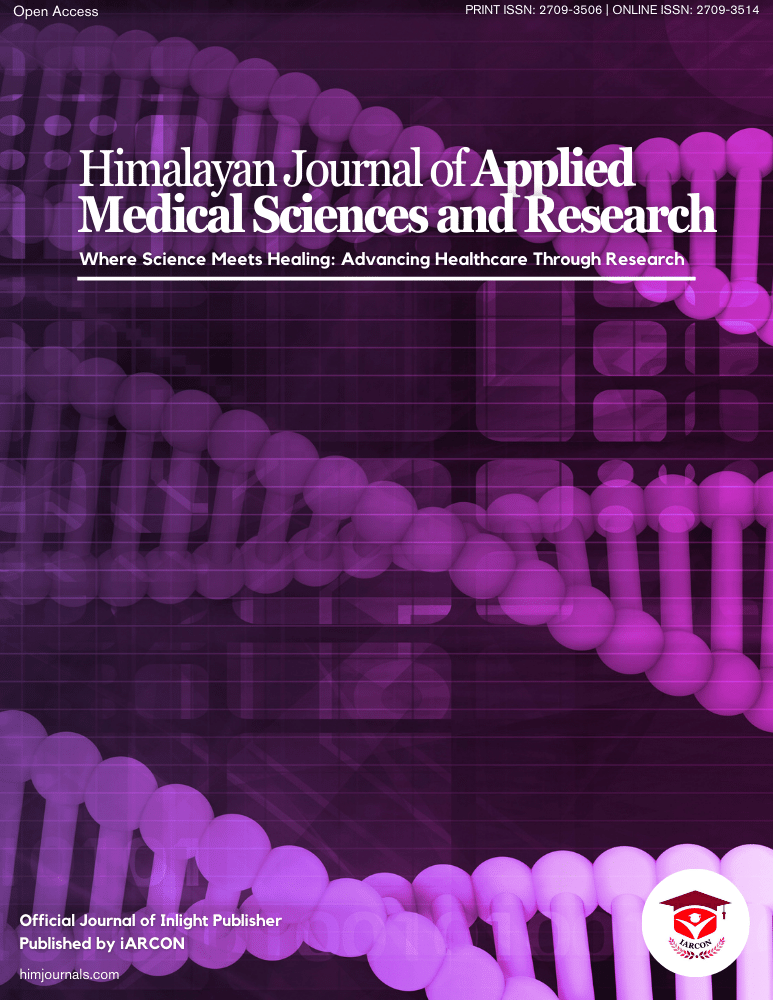Distribution of Cervical Cancer According to Age, Region, and blood groups in Patients Attending Sabratha National Cancer Institute, Western Libya
Abstract
Background: Cervix cancer is one of the most common cancers in women worldwide, and is the third most common malignant disease in women. It is one of the main health problems in Libyan women. Blood act as a pathological reflector of the status of the exposed patient to infections and other conditions. Laboratory tests on the blood are vital tools that help detect any deviation from normal in the human body. As the disease progresses, changes appear in haematological parameters which have been of relevant consideration in the context of cancer patients. Objectives: The present study aimed to investigate the distribution of cervical cancer according to regions, age, and blood groups in patients attending Sabratha National Cancer Institute in Western Libya. Subjects and Methods: The present study was conducted on 150 cervical cancer patients, attending the National Cancer Institute of Sabratha from the 11th February 2006 to the 3rd February 2020. This study was approved by the Research and Ethical Committee of Sabratha University and Sabratha National Cancer Institute. Age was extracted from patient files. Also, 60 healthy individuals without any chronic disease were recruited for the control group. Blood samples were collected by vein puncture. Blood samples were collected by vein puncture. 1 ml of venous blood was withdrawn from each participant in the study by using disposable syringes under the aseptic technique for determination of blood groups. The data was compared using Chi-Square using SPSS Statistics for Windows, Version 26. Results: The results showed that the mean age of the cervix cancer patients was 53.37±11.6 years. The higher distribution of cervix cancer patients was 42.7% in the age group (45-54) years while the lower distribution of cervix cancer patients was 1.3% in the age group (85-94) years. The distribution of patients according to the region were gradually 20.7%, 20%, 19.3%, 13.3%, 8%, 7.3%, 6.7%, and 4.7% in Tripoli, South Libya, Zawia, East Libya, Surman, Aljabl Algarbi, West Sabratha, and Sabratha, respectively. The distribution of A, B, AB, and O blood groups were 24.7%, 16.7%, 11.3% & 47.3%, and 36.7%, 17.3%, 4.7% & 41.3%, among healthy individuals and cervix cancer patients, respectively. The distribution of Rh+ and Rh- blood groups showed a significant (P<0.01) difference between healthy individuals and cervix cancer patients that, were 82% & 18%, and 95.3%& 4.7%, respectively. The distribution of A+, A-, B+, B-, AB+, AB-, O+, and O- blood groups were 23.3%, 1.7%, 11.7%, 5%, 6.7%, 5%, 38.3% & 8.3%, and 34.7%, 2%, 14.7%, 2.7%, 4.7%, 0%, 41.3%& 0% among healthy individuals and cervix cancer patients, respectively. Conclusion: It can be concluded that the mean age of the cervix cancer patients was 53.37years and the higher distribution of cervix cancer patients was in the age group (45-54) years. The distribution of A, B, AB, and O blood groups were 36.7%, 17.3%, 4.7% & 41.3%, among cervix cancer patients. The distribution of Rh+ and Rh- blood groups were 95.3%& 4.7%, among cervix cancer patients. Further studies are needed to confirm these results.


